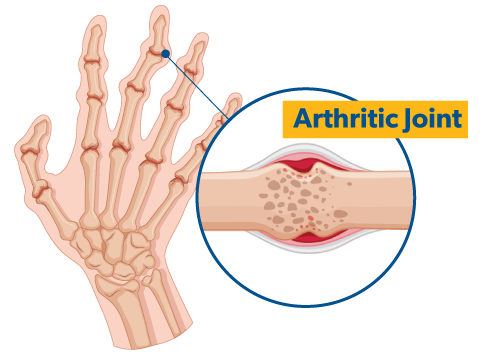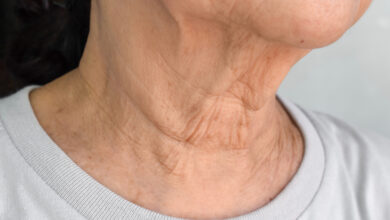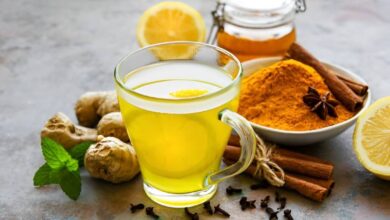What does arthritis pain feel like?

Arthritis pain is a complicated and often devastating ailment that affects millions of individuals worldwide. Arthritis affects everyone, from the elderly to young folks, limiting everyday activities and lowering quality of life. In this detailed guide, we will dig into the complexities of what arthritis pain genuinely feels like, providing light on its numerous forms, symptoms, and treatment options.
Tapentadol 200mg is a larger dose of the medicine used to treat moderate to severe pain. Tapentadol 200mg, like the 100mg dosage, is an opioid analgesic. Its mode of action includes binding to the mu-opioid receptor and blocking norepinephrine reuptake, resulting in dual pain relief benefits.

The Diverse Spectrum of Arthritis Pain
Arthritis is a wide term that refers to a variety of disorders characterised by joint inflammation and stiffness. The pain caused by arthritis may vary from modest discomfort to terrible anguish, depending on the kind and severity of the ailment.
Osteoarthritis: Wear and Tear Pain.
Osteoarthritis is the most prevalent kind of arthritis, often known as degenerative joint disease. It happens when the protective cartilage that cushions the ends of your bones deteriorates over time, causing pain, swelling, and stiffness. Osteoarthritis pain is often characterised as a dull discomfort that is worse by activity and reduced by rest.
Rheumatoid arthritis causes chronic inflammatory pain.
Rheumatoid arthritis is an autoimmune illness in which the immune system wrongly attacks the joints, resulting in inflammation, discomfort, and ultimately joint destruction. Rheumatoid arthritis, unlike osteoarthritis, causes symmetrical pain that is accompanied by warmth and swelling in the afflicted joints. It may vary from modest discomfort to severe, debilitating agony, making daily chores difficult.
Gout: Acute, Intense Pain.
Gout is a kind of arthritis that causes sudden, acute outbreaks of pain, swelling, redness, and tenderness in the joints, most often in the big toe. Gout flares, or attacks, may be provoked by a variety of variables including food, alcohol intake, and stress. The pain of gout is sometimes characterised as throbbing, crushing, or terrible, peaking within a few hours and then lessening over days to weeks.
Tapentadol 100mg is a medicine used to relieve moderate to severe pain. It is an opioid analgesic. The major method of action is to bind to the mu-opioid receptor and impede norepinephrine reuptake. This multimodal mechanism helps manage pain by influencing both the opioid and noradrenergic pathways.

Sensation of Arthritis Pain
The experience of arthritis pain may be difficult to describe since it varies considerably from person to person and is determined by variables such as arthritis type, intensity, and individual pain tolerances. However, there are certain common adjectives that individuals often use to explain their experience with arthritic pain:
Aching is a dull, persistent ache that occurs in the afflicted joints and generally worsens with movement.
Stiffness: A feeling of stiffness or immobility in the joints, especially upon getting up in the morning or after a lengthy period of inactivity.
Throbbing is a throbbing pain feeling that is usually accompanied by edoema and redness in the afflicted region.
Sharp: Intense, piercing pain that may strike abruptly and unexpectedly, making movement agonising.
Buy tapentadol online is a centrally acting analgesic (pain reliever) that treats moderate to severe pain. It is classed as an opioid analgesic and comes in both immediate and extended-release forms. Tapentadol binds to mu-opioid receptors in the central nervous system and inhibits norepinephrine reuptake.
Coping With Arthritis Pain
Living with arthritis pain may be difficult, but there are many techniques and therapies available to help control symptoms and improve overall quality of life.
Medications
Nonsteroidal anti-inflammatory medicines (NSAIDs) are pain and inflammation-relieving medications available over the counter or by prescription.
Disease-modifying antirheumatic medicines (DMARDs) are medications that reduce or halt the course of rheumatoid arthritis by inhibiting the immune system’s inflammatory response.
Corticosteroids: Potent anti-inflammatory drugs that may offer immediate relief from arthritic symptoms whether taken orally or by injection.
Lifestyle Modifications
Exercise: Strength training, stretching, and low-impact activities such as swimming or cycling may all assist to improve joint function and decrease discomfort.
Weight Management: Maintaining a healthy weight helps lower joint strain and the risk of developing osteoarthritis or increasing pre-existing symptoms.
Hot and Cold Therapy: Putting hot or cold packs on the afflicted joints will help decrease pain and inflammation, offering temporary relief.
Alternative Therapies
Acupuncture is a traditional Chinese treatment that involves inserting small needles into particular locations of the body to relieve pain and promote healing.
Massage therapy involves gentle manipulation of the muscles and soft tissues around the damaged joints to increase circulation, decrease stress, and alleviate pain.
Mindfulness and Relaxation Techniques: Meditation, deep breathing, and guided imagery may all help manage stress and enhance coping skills for chronic pain.
Conclusion
To summarise, arthritis pain is a complex and frequently difficult element of life with arthritis. From the slow aching of osteoarthritis to the severe, stabbing agony of gout, the feeling of arthritic pain varies greatly amongst people. However, with the correct mix of drugs, lifestyle changes, and alternative treatments, arthritis patients may successfully control symptoms and improve their overall quality of life.



